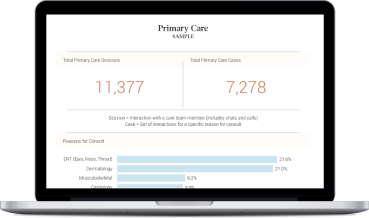Canadian HR professionals report facing a host of challenges, with more on the horizon. These issues are interconnected and have the potential to create a less-than-ideal work environment. At the top of the list are employee mental health and well-being concerns, as employers strive to address the worsening physical, mental, and financial health of their workforce.
HR teams and employees are in agreement: these factors are the biggest contributors to overall well-being. And if not cared for effectively, they can negatively impact the health of the workplace as a whole, resulting in a less healthy, less productive, and more absent workforce.
Other HR challenges, including overworked employees, talent retention, and talent attraction, are significantly influenced by mental health and well-being.
But there’s good news. Organizations that provide adequate support demonstrate less turnover and face fewer hurdles in talent acquisition. Therefore, making sure employees are well taken care of becomes crucial for companies aiming for long-term growth.
Taking a step back, we see issues that extend beyond individual employee challenges, with employers identifying a lack of productivity, innovation, and resources as critical business problems. At the heart of these challenges are people — when employees are not supported in their well-being, they may struggle to propel the organization forward.
While HR professionals are doing their best to meet the needs of their teams, employees note that the benefits and services available to them are still lacking. Yet, they’re willing to explore new and different ways of seeking support.
Almost all want to improve their personal well-being and expect their employers to play a role in supporting them. Investing in virtual care, self-guided tools, and tailored support can help Canadians manage their health, offering employers a means to better employee well-being.




 Canada (EN)
Canada (EN)
 Global (EN)
Global (EN)
%201.png?width=780&height=445&name=AdobeStock_536917849%20(1)%201.png)
.png?width=282&height=300&name=v2%20(3).png)
.png?width=483&height=632&name=AdobeStock_256574572%201%20(2).png)
%20(1).png?width=215&height=276&name=AdobeStock_256574572%201%20(1)%20(1).png)
.png?width=1725&height=1272&name=Group%2015803%20(1).png)











.png)

 of working Canadians must wait 4+ days to see a family doctor.
of working Canadians must wait 4+ days to see a family doctor.







%20(1).png)
